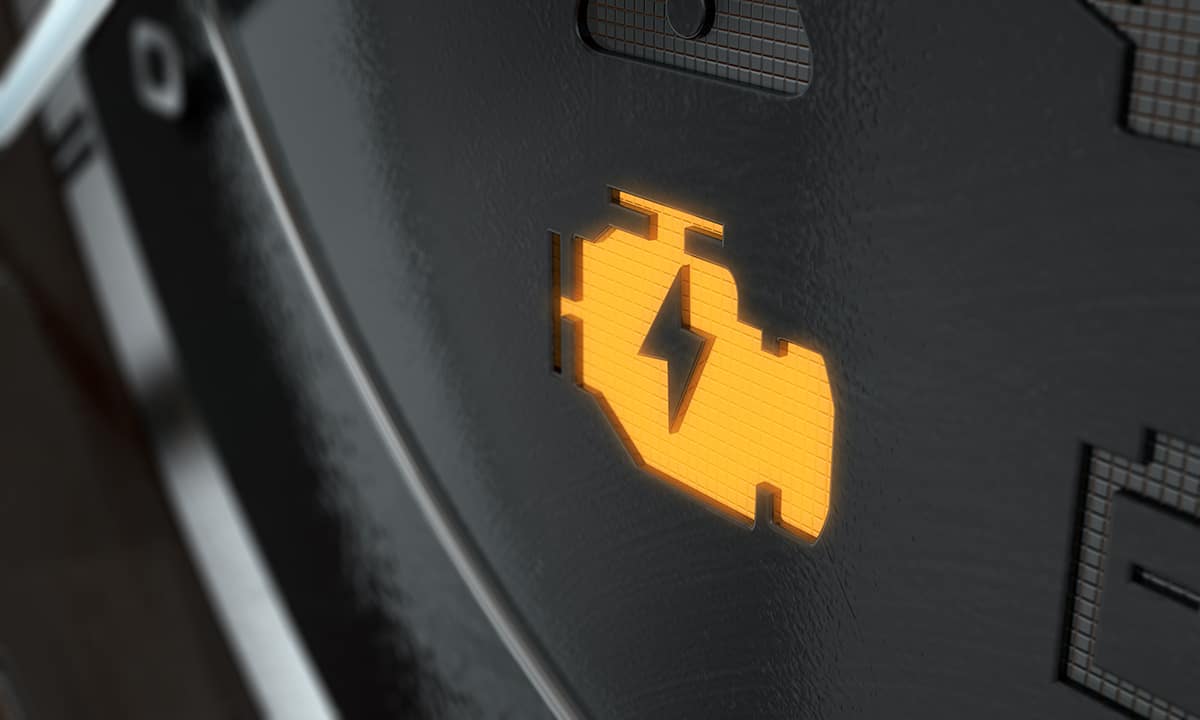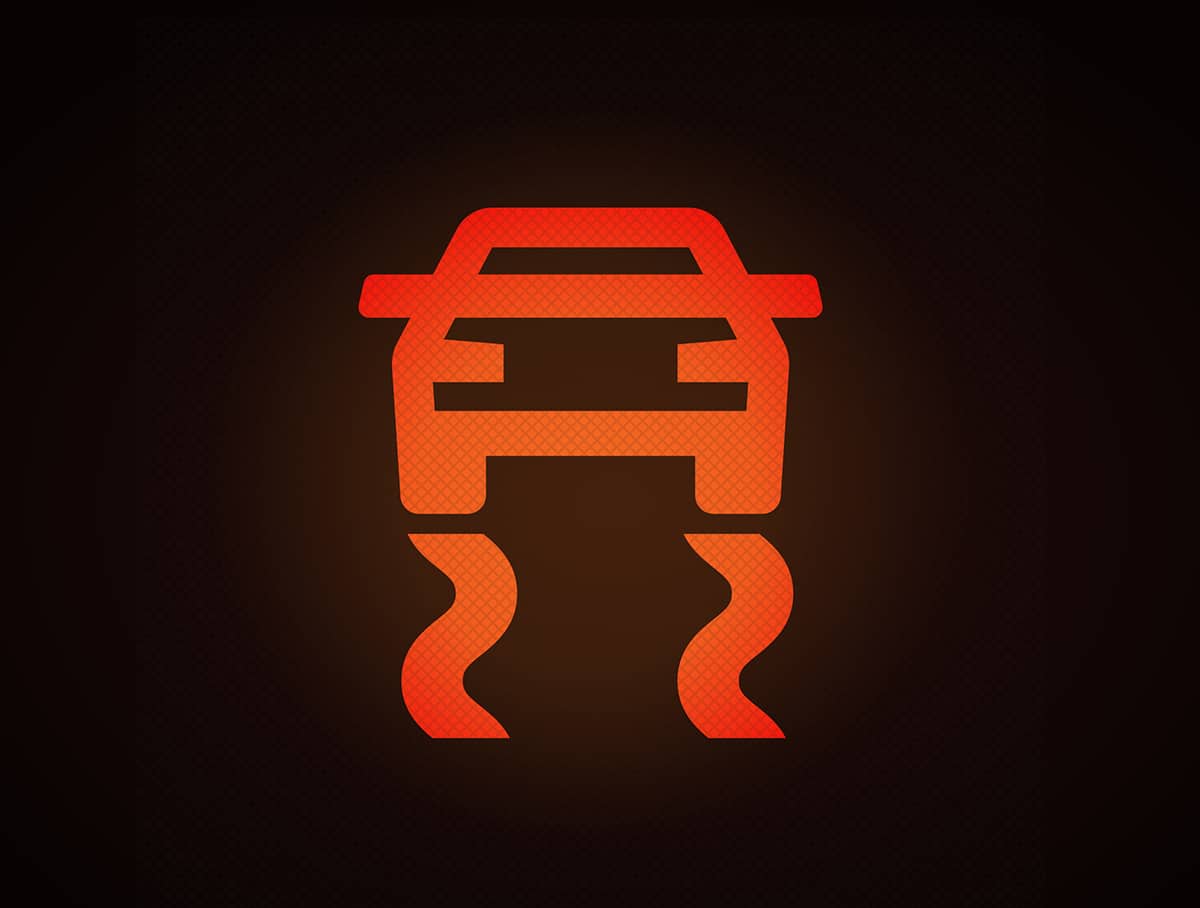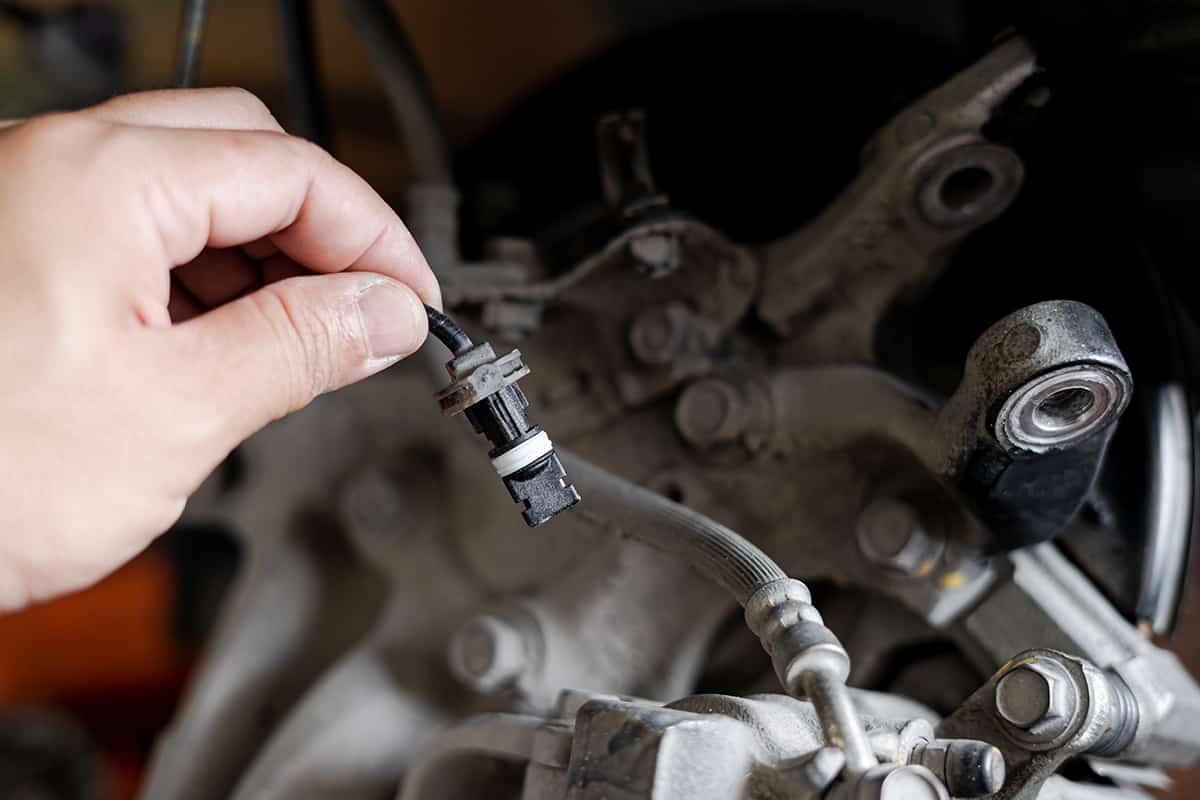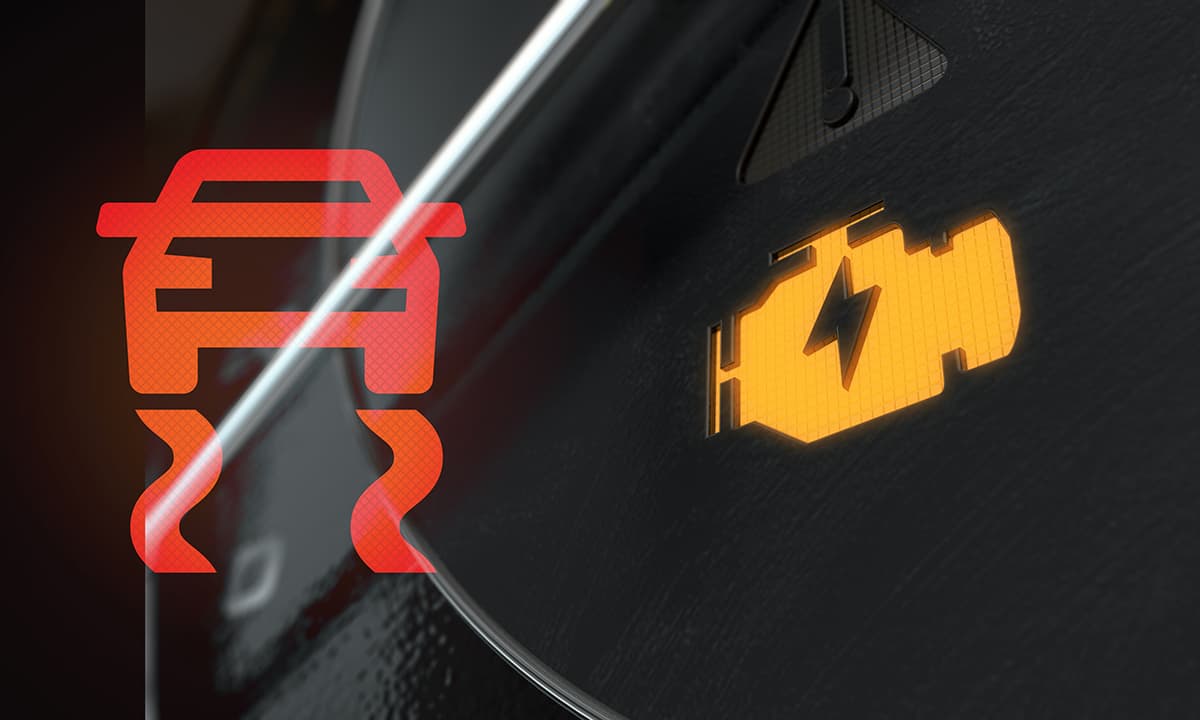Nobody likes seeing flashing lights on their dashboard, but as much as you want to ignore them, they can mean something serious. But seeing multiple lights turn on—e.g., the check engine light and the traction control light—can be even more concerning.
When the check engine and traction control lights turn on simultaneously, it could mean any of the following:
- Traction loss
- Failing traction control system
- Faulty wheel speed sensors
- Loss of control over one or more wheels
- Misfiring engine
In this guide, we’ll go over what each of these lights means individually, as well as what it could mean when they turn on at the same time.
Check Engine Light Flashing

1. Loose or damaged gas cap
The gas cap provides a seal that helps maintain the pressure in the fuel tank. If the gas cap is loose or damaged, it can allow air to enter the fuel tank, causing the fuel system to lose pressure. This will cause the engine control module (ECM) to store a diagnostic trouble code, which can be retrieved and used to diagnose the problem.
2. Faulty oxygen sensor
A faulty oxygen sensor can cause the check engine light to turn on because the sensor is responsible for measuring the oxygen content in the vehicle’s exhaust. This will result in reduced fuel efficiency, increased emissions, and a decrease in performance.
3. Malfunctioning catalytic converter
A bad catalytic converter can cause the check engine light to turn on because it is responsible for reducing emissions from the vehicle’s engine. If the catalytic converter becomes clogged or damaged, it will restrict exhaust flow and cause the engine to run poorly. This will result in reduced fuel efficiency, increased emissions, and a decrease in performance.
4. Ignition misfire
An ignition misfire occurs when one or more of the cylinders are not firing correctly, causing the engine to run poorly and lose power. The misfire can be caused by several factors, such as faulty spark plugs, ignition coils, or fuel injectors.
5. Mass air flow sensor issue
The mass air flow sensor (MAF) is responsible for measuring the amount of air entering the engine. If the MAF sensor fails or becomes dirty, it will send incorrect readings to the ECM, causing the engine to run poorly and lose power. The incorrect air/fuel mixture can also result in increased emissions.
6. Fuel injection system problem
The fuel injection system is responsible for delivering the correct amount of fuel to the engine. If the fuel injection system fails or becomes clogged, it can cause the engine to run poorly, lose power, and emit increased emissions.
7. Faulty spark plug or spark plug wire
The spark plugs and wires are responsible for delivering the electrical spark to ignite the fuel in the engine. If a spark plug or wire fails, it can cause an ignition misfire, which can result in a decrease in performance, increased emissions, and damage to the engine.
Traction Control Light On

1. Low tire pressure
Low tire pressure can cause the traction control light to turn on because it affects the vehicle’s stability and handling. Most modern vehicles have tire pressure monitoring systems (TPMS) that will alert the driver if the tire pressure is too low.
The traction control system will detect the reduced tire pressure and turn on the traction control light to warn the driver.
2. Malfunctioning ABS (Anti-lock Braking System) sensor

The ABS sensors are responsible for monitoring the wheel speed. If an ABS sensor fails or becomes dirty, it will send incorrect readings to the ABS control module, causing the ABS system to malfunction. The traction control system will detect the ABS malfunction and turn on the traction control light to warn the driver.
3. Broken or worn traction control system components
The traction control system uses various components such as wheel speed sensors, control modules, and actuators to control wheel spin and maintain traction. If any of these components become damaged or worn, it can cause the traction control system to malfunction.
4. Wheel speed sensor issue
The wheel speed sensors are responsible for monitoring the speed of each wheel. If a wheel speed sensor fails or becomes dirty, it will send incorrect readings to the traction control system, causing the system to malfunction.
5. Electronic stability control malfunction
The ESC is responsible for maintaining the vehicle’s stability by controlling the brakes and engine power. The traction control system will detect the ESC malfunction, triggering the dash light to turn on.
6. Suspension system issue
The suspension system affects the vehicle’s handling and stability. If the suspension system becomes damaged or worn, it can cause the vehicle to handle poorly, reducing traction and stability, especially in wet or slippery conditions. The traction control system will detect the suspension issue and turn on the traction control light.
7. Excessive wheel spin
If the wheels spin excessively, the traction control system will reduce engine power and apply the brakes to individual wheels to restore traction. If the traction control system is unable to restore traction, the traction control light will turn on to warn the driver of the issue.
Check Engine Light Flashing and Traction Control Light On—Causes and Fixes
Seeing either of these warning lights can be a cause for concern, but it becomes amplified when both lights turn on simultaneously. Luckily, some of the causes for this are easy to fix. Here’s what you should look for (and what you can do) if the check engine light and traction control lights turn on at the same time.
Underinflated tires
If your car has a TPMS system, take a look at the display to figure out which tire(s) is underinflated. A warning indicator should flash if the pressure in at least one of the tires is 25% beneath its ideal pressure.
To resolve this problem, inflate the tire to the correct pressure setting and reset the TPMS system. From there, it should alert the traction control system that the tire is inflated and can withstand certain road conditions.
The traction control system disengaged
The traction control system’s light may turn on when you shut the system off via pressing the button. In rare instances, this can trigger the check engine light to flash, even though there is nothing wrong with the traction control system or the engine. In this case, you should turn on the traction control system or take your vehicle to get it inspected by a professional mechanic.
How to Diagnose Engine or Traction Control Problems
Modern vehicles allow drivers, who may not be particularly handy around vehicles, to diagnose certain problems on their own. The only thing you’ll need to diagnose your car for any problems is an OBD-II scanner.
An OBD-II scanner checks your car’s “vital signs” and displays highly specific error codes, indicating which part or parts are faulty.
When using an OBD-II scanner, look for the following codes related to the traction control system.
PO858—traction control input signal low
PO856—faulty traction control input signal
What Does the Traction Control Light Mean?
The traction control system is designed to improve traction and stability, especially in slippery conditions. If the traction control light is on, it means that the system has detected a problem and is unable to perform its functions effectively.
The most common causes of the traction control light turning on include low tire pressure, malfunctioning ABS (Anti-lock Braking System) sensors, faulty wheel speed sensors, worn or damaged traction control system components, and electronic stability control malfunctions.
What Should You Do When Traction Control Light Turns On?
Some of you may feel inclined to ignore the traction control light (or any warning light on your dash, for that matter). You should not do this since this light warns that your vehicle may not be equipped to travel in certain road conditions. Here’s what you should do if the light turns on.
- Reduce speed and drive with caution—If the traction control light is on, it means that the vehicle’s traction control system is unable to perform its functions effectively. It is important to reduce speed and drive with caution to avoid further damage or reduced stability.
- Check tire pressure—Before taking the vehicle to a mechanic, check the tire pressure to make sure it is at the recommended level. Low tire pressure is one of the most common causes of the traction control light turning on.
- Have the vehicle inspected—It is recommended to have the vehicle inspected by a mechanic as soon as possible to diagnose the issue and determine the necessary repairs.
Can You Drive with Traction Control Light On?
Yes, you can, but you should proceed with caution. The light tells you that your car’s tires may not handle slippery or wet roads and that you may lose control of your vehicle at any moment. That said, you should drive slowly and carefully to the nearest mechanic to see what they can do.






